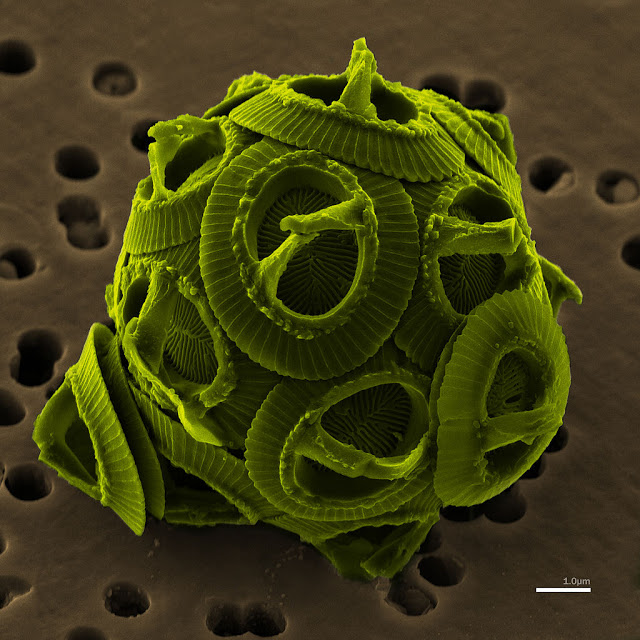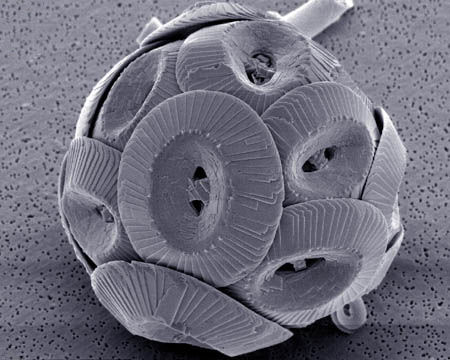

| Online: | |
| Visits: | |
| Stories: |

| Story Views | |
| Now: | |
| Last Hour: | |
| Last 24 Hours: | |
| Total: | |
Fossil Plankton: A Key To Understanding Prehistoric Climate Change
Alongside collaborators from the Plymouth Marine Laboratory and the University of Washington, St. Louis, the team from Oxford’s Earth Sciences Department studied coccolithophores, single-celled algae that live on carbon dioxide, water and sunlight. Some plankton are known for making shells whose chemistry records the environment they live in.
Scientists have long been able to measure these chemical signals, and limited evidence about how much environmental and physiological conditions impacted the chemical imprint of these ancient plankton has previously made it very difficult for them to interpret the data. But the new findings, published in the journal Nature Communications, could change that.
Recreating the prehistoric environment in laboratory conditions, the team grew different species of this algae, each with varying carbon levels. The mathematical model of the results they created allowed the team to show which factors controlled the chemical signals in the coccoliths.
By observing that the algae’s chemical signature was species-specific, and dependent on the rate at which they grow and calcify, they have found direct links between the chemistry of the coccoliths, the physiology of plankton, and their external environments. Studying these differences in more detail could shed light on prehistoric ocean conditions and help scientists gain further understanding of how sensitive the Earth is – or was-to carbon dioxide and how much, and how drastically, the climate changed during this time.
Their findings not only support understanding of individual algal physiology and evolution, but also the geological fossil patterns and chemistry that have been observed throughout history.
Describing the study’s unique value, senior scientist and Professor of Biogeochemistry at Oxford, Rosalind Rickaby, said: ‘Our model allows scientists to understand algal signals of the past. Like never before. It unlocks the potential of fossilised coccolithophores to become a routine tool, used in studying ancient algal physiology, and also ultimately as a recorder of past CO2 levels. With further research it has the potential to tell us the atmospheric carbon dioxide levels of the Earth during the dinosaur era. Obviously, we know that during that time there was no ice on the planet. Today we have ice at both poles, and knowing the amount of carbon dioxide needed to transform the planet in this way will help us to understand why.’
Contacts and sources:
The study ‘The origin of carbon isotope vital effects in coccolith calcite’ was funded by the NERC and the European Research Council, and full findings feature in the latest issue of Nature Communications. The paper’s lead author is Harry-Luke McClelland, and the co-authors are Jorn Bruggeman, Rosalind Rickaby and Michael Hermoso.
Source: http://www.ineffableisland.com/2017/03/fossil-plankton-key-to-understanding.html




